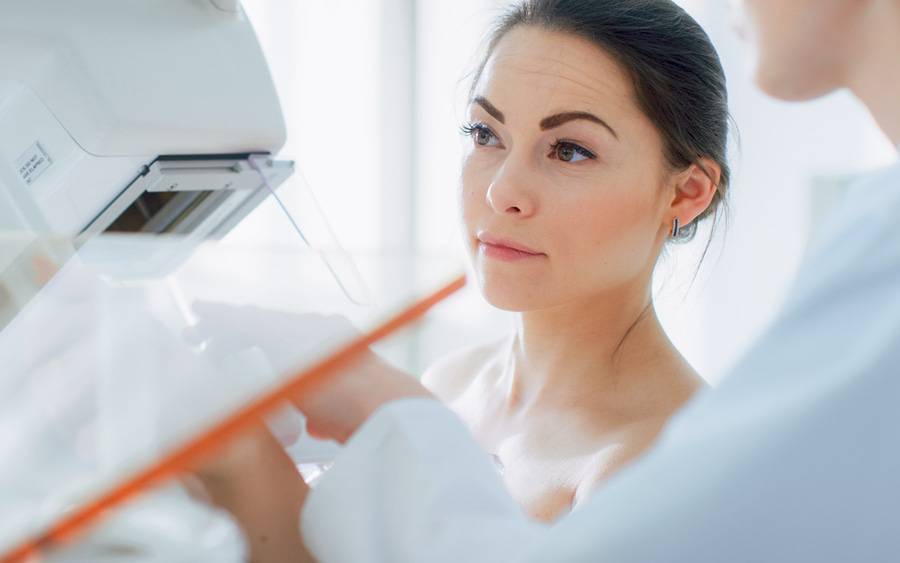How Does Breast Surgery Affect Cancer Screenings?
Type of surgery determines if you need a mammogram

Type of surgery determines if you need a mammogram
If you’ve had a lumpectomy, breast reduction or breast lift, you will likely want to know how this affects your ability to get a mammogram in the future.
Most women, including those with breast implants, should get an annual mammogram starting at age 40 to check for breast cancer. Women who are at high risk for breast cancer should be seen sooner and more frequently.
If you’ve had breast surgery, make sure your health care provider has all the information available about your procedure before getting a mammogram. Keep in mind your breast tissue may be different after surgery and you may have some scar tissue.
Mammogram after a breast lift
A breast lift – where a plastic surgeon changes the shape of your breasts – makes your earlier mammograms less helpful for future comparisons. For this reason, your doctor may recommend getting a new baseline mammogram about six months after your surgery.
“The new baseline will become the new standard that your doctor will use to compare future screenings against, and identify changes,” says Louis Rivera, MD, a surgical oncologist at Scripps Cancer Care and Scripps Clinic.
“Overall, your mammography experience shouldn’t change following a breast lift. The compression machine will not ‘undo’ your lift or cause your breasts to sag,” Dr. Rivera adds. “An experienced mammography technician will still be able to get the views needed without causing you undue discomfort.”
Mammogram after breast implants
Having breast implants should not prevent you from being able to get a mammogram or breast cancer screening.
However, women with breast implants should seek out a breast cancer center or expert who has a lot of experience doing mammograms with breast implants present. These experts should know exactly what to do to get X-rays that show as much breast tissue as possible. Usually, they will gently push the implant back against your chest wall and pull your breast tissue forward and over it.
In a regular screening mammogram, X-ray pictures of each breast are taken, typically from two different angles. If you have implants, a few more X-rays are taken. These extra X-ray pictures are called implant displacement views and capture better images of the front part of each breast.
Mammograms after breast reduction
A breast reduction involves the removal of breast tissue. Because your breasts change and scar tissue can form after the procedure, it’s helpful to get a new baseline mammogram about six months after the surgery. These scans will become the new standard for your doctor to use when looking at future screenings.
“Your mammogram experience post-reduction shouldn’t be any different than what you experienced before surgery. If anything, you might find the procedure to be more comfortable since there is less tissue to compress,” Dr. Rivera says.
Mammograms after breast cancer surgery
Nearly all women with breast cancer will have surgery at some point as part of their treatment, according to the American Cancer Society. The type of surgery you have will affect whether you need to get mammograms in the future.
Mammograms after a lumpectomy
A lumpectomy – which is a procedure to remove cancerous tissue – is often an option for a woman in early-stage cancer. It is also known as breast conserving surgery and an annual mammogram is still needed.
Radiation therapy often follows a lumpectomy. A patient may also elect to have breast reconstruction using silicone or saline implants or breast reduction to make their breasts more even after the procedure.
These treatments can change your breast tissue and skin. For this reason, you should get a new mammogram, sometimes called a surveillance mammogram, six to twelve months after your treatment ends. Your doctor will use this new baseline mammogram to compare and look for changes in future screenings.
“After a lumpectomy, your mammogram screenings will take place as usual. Your doctor may ask for extra diagnostic views of the lumpectomy area, or for additional screenings like ultrasounds or MRIs,” Dr. Rivera says. “Ask your doctor if you need to get a mammogram every six months or if it’s okay to get them annually.”
Mammogram after mastectomy
If both breasts have been removed via a double or bilateral mastectomy, then there is no breast tissue to scan, and no mammogram is necessary.
However, some women who undergo mastectomies still need screenings. These include women who have undergone a unilateral mastectomy, where there is one remaining breast to screen.
“It’s understandable to have concerns about mammogram screenings after breast surgery. That’s why it’s important to choose a breast care center that has experienced staff that routinely works with prior breast surgeries,” says Dr. Rivera.